Pete Blunsdon of Root Cause Organics continues his series of guest posts about how to build your own aquaponics greenhouse. In Part 2, he gets to grips with the all important plumbing.
* Geekery warning * Apparently, this post is heavy on technical detail and somewhat light on comedic anecdotes. (Personally, I’m ok with that.)
After the assembly work described in Part 1 was complete it was time to get to work on the plumbing. This system uses a single submersible pump that’s permanently running 24 x 7. As it’s on all the time, power consumption was obviously a key factor and I was pleased to find this a Jebao Jecod super low wattage XOR-5000 garden pond pump for just under £60. This has a flow rate of 5,000 litres/hour and uses a mere 22w.

Credit: Root Cause Organics
This is the process I went through to size the pump:
-
Assume the grow bed volume is around 300 litres (third of an IBC), but half of the volume is the growing media. So there’s about 150 litres in each grow bed
-
If this grow bed floods and drains every 15 minutes then that’s 600 litres per hour
-
There are two grow beds so that’s 1,200 litres an hour
-
Allow a 50% expansion factor (for vertical growing or an additional bed) which makes the total grow bed water supply at 1,800 litres per hour
-
The fish tank is 1,000 litres and the general recommendation is that all of this should be cycled once an hour
-
So that makes a total of 2,800 litres per hour
Driven by the need to over-engineer, the 5,000 litres / hour pump was the natural choice. The pump raises the sump water to a valve assembly where the flow to the grow beds and fish tank can be regulated. The pipework was 1.5″ PVC pressure pipe pictured at the top of this post (from koilogic.co.uk) – this is expensive but a joy to work with.

Credit: Root Cause Organics
The outflow from the grow beds is through a 1″ standpipe which passes through the bottom of the IBC. This standpipe is part of the auto-siphon – more of this below. The hole through which the pipe passes is made water tight using a “uniseal” rubber bulkhead adapter. It’s pretty scary making a hole in your precious grow bed so it’s a good idea to practice on some offcuts first. The uniseal fit is incredibly tight but with a bit of wiggling it was eventually possible to get the pipe to pass through.

Credit: Root Cause Organics
By the way, if you’re still with me at this point, then you can award yourself three Nerd Points – redeemable at your local Aquaponics Anonymous meeting.)
Underneath the grow bed there are a couple of 90 deg elbows (which helps the auto siphon effect), then the pipe just dumps into the sump tank.

Credit: Root Cause Organics
To make the auto-siphon I then made up a bell housing using 2″ PVC pipe, and the whole thing was kept free of the growing media using a gravel guard – in this case a section of 4″ plastic soil pipe with slots cut to allow the flow of water. Each of the components are shown in the photo below. To assemble, the bell housing is dropped over the standpipe and gravel guard placed around that.
Once the water level reaches the top of the standpipe it flows down the standpipe, so it’s the height of the standpipe that dictates the maximum height of water in the grow bed.

Credit: Root Cause Organics
Auto siphons are awesome. They’re the vital components that make the grow beds flood and drain every 15-20 minutes. And they do this without power, switches or pumps, completely automatically. So why do we need a flood and drain system? Whilst some plants (like lettuce) can grow with their roots permanently submerged, others like to get a bit of air to them. Flooding the grow bed then letting the water drain out draws oxygen down to the roots and creates an environment for the bacteria to thrive in. The auto siphon consists of three main components:
-
The standpipe that pokes through the base of the grow bed
-
A bell housing that fits over it
-
A gravel guard that prevents the growing media from clogging things up
The height of the standpipe dictates the maximum level of the water in the grow bed. When the level reaches the top of the pipe, it overflows down the pipe and into the sump tank underneath. The water is drawn up through cut-outs at the base of the bell housing and flows down into the downpipe. As the flows down the standpipe, it creates a siphon effect, drawing more water up through the cut-outs. The siphon then goes into full flood mode, emptying the whole grow bed quickly, until air gets drawn into the tube, breaking the siphon. At this point the outflow ceases and the grow bed gradually fills up again. There’s an excellent paper on auto siphons at http://www.ctahr.hawaii.edu/oc/freepubs/pdf/bio-10.pdf – highly recommended.
I used a 1 inch tube for the standpipe with a uniseal through the base of the grow bed. A 2 inch tube with a glued-on end cap formed the bell housing. The gravel guard was a section of 4 inch soil pipe with slots cut in it using a table saw for the water to flow through. The bell housing also features a ‘snorkel’ – a piece of flexible tubing that helps to break the siphon went the water is emptied. There’s more on all of this in the design paper linked above. Once fitted it was time to test the auto siphons worked as expected before adding the the growing media. In this time lapse you can see the flood and drain process in action:
Next up is the swirl filter – made from a 60 litre blue plastic barrel (around £20). The idea here is that water comes into the barrel at an angle causing the water to swirl round. As it does so, solids (fish poo and any uneaten food granules) gradually sink to the bottom. The outflow is taken from the top centre of the barrel where the water is cleanest.

Credit: Root Cause Organics
The final bit of plumbing is for the fish tank. The inflow is fed from the valve assembly and incorporates a spray bar to help break the surface tension and thereby oxygenate the water. The outflow pipe draws water up from the bottom of the IBC and feeds the swirl filter through a bulkhead seal (uniseal) near the top of the tank. This helps remove any solids that accumulate in the tank.

Credit: Root Cause Organics
That’s the plumbing completed. Well done if you made it this far. In the next post I’ll cover the growing media, plants and (finally) fish!
 About the author
About the author
Pete runs Root Cause Organics, an experimental microholding in Buckinghamshire, alongside Ayesha. Having started out as a scientist and an engineer and despite selling their souls to IT, they haven’t lost their passion for learning and building. Together they aim to save the world, one over-engineered project at a time. You can read more about their work and find a link to their blog here.

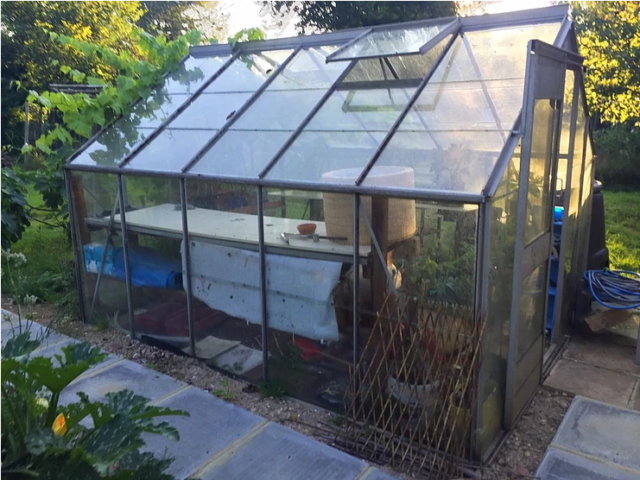
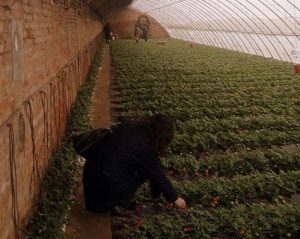
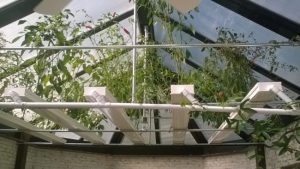
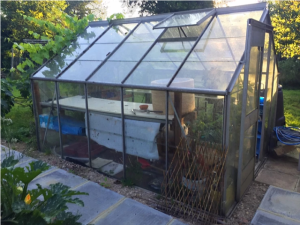
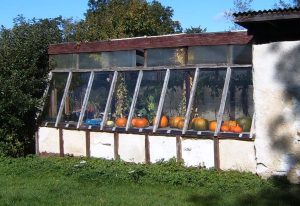
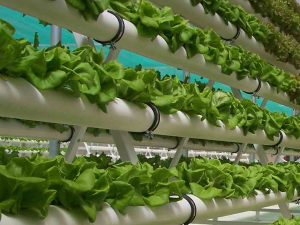

1 Comment
Peter, I’d be really interested to know the amount of food you get from this system when it’s up and running.